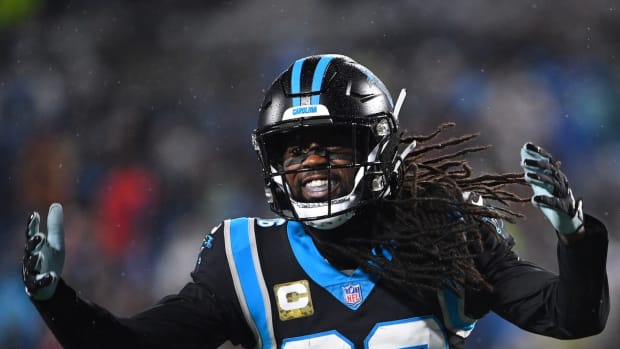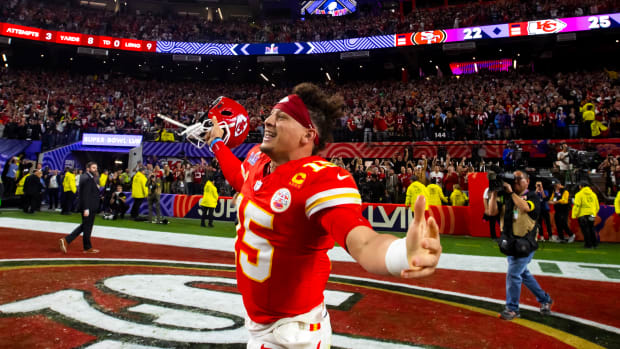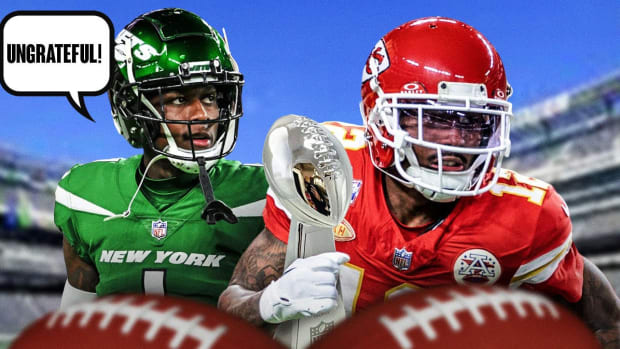Drew Brees: The ‘Perfect’ QB Remains in a Perfect Place with the Surging Saints
At the NFL combine, four high-profile offensive coaches sat around a lunch table talking openly about their quarterbacks. None had ever coached Drew Brees, but when the 39-year-old’s name came up, the conversation’s tenor shifted.
“I love, love, love him,” said one coach.
“LOVE him,” another said, more emphatically. Someone uttered the word “perfect.”
Tom Brady is the consensus greatest QB of this era (if not all time), but Brees is the one NFL coaches praise the most. The reasons why help explain how Brees’ re-signing with the Saints—two years, $50 million, $27 million of it guaranteed—was all but inevitable.
Besides the fact that Brees and his wife love raising their two boys in New Orleans, and that the Saints are one of the NFC’s 2018 Super Bowl front-runners, there’s the matter that Brees and the Saints form the best QB-system fit in all of football.
At Quarterback, a New Backup Plan in the NFL
After the requisites of arm talent, football IQ and leadership, there are three characteristics of top-level quarterbacking, all of which Brees has in abundance.
The first is the ability to play within the pocket. Brees’s pocket mobility and awareness is as refined as anyone’s, which is how he has learned to create vision lanes for himself that overcome his 6’0” stature. The Saints have always aided this by investing heavily along their interior offensive line. For years they had two of the league’s seven highest-paid guards in Jahri Evans, Carl Nicks and, later, Ben Grubbs. Currently they have 2015 first-rounder Andrus Peat and pricey 2017 free agent Larry Warford at these positions, plus former first-round pick and Pro Bowl Seahawk Max Unger at center.
The second top-level quarterbacking characteristic is the ability to work smoothly through all of your reads. New Orleans runs a pure progression-read scheme, meaning Brees’s reads are always 1-2-3-4-5. (He’s famous for taking mental reps all the way through Read 5 on every snap in practice, regardless of when the ball is thrown.) Progression passing tends to be a simpler approach. Naturally, many QBs who do it are “see it” guys, meaning they must see a read show open before pulling the trigger. Brees, with his trove of wisdom, has long been the rare anticipatory progression passer. He can anticipate and target certain progressions without confirming that they’re open. This is why his diminishing arm strength has not been an issue. The Saints aid this by having a superb play-caller and designer in Sean Payton, and a scheme with flexible weapons, most notably 2017 Offensive Rookie of the Year Alvin Kamara, who creates favorable matchups for himself and others. Brees has a lot of freedom for pre-snap adjustments. Altogether, it’s as quarterback-friendly as a system gets.
NFL Free Agency 2018 Guide and Tracker: Suh to the Rams
The third characteristic of top-level quarterbacking is the ability to manipulate defenders with your eyes and mechanics. Think of a QB looking one way, making a safety react, and then throwing another. Or think of subtle pump-fakes and shoulder rolls, or hitches in the dropback—things that make defenders jump. Very few QBs can manipulate a defense like this on an every-down basis; the list includes Brady, Rodgers, Roethlisberger, Luck and, soon, Wentz.
Almost to a man, coaches say that Brees tops this list. This is where he and the Saints’ system form the perfect marriage. Most of New Orleans’ aerial designs attack downfield and inside, between the field numbers. This is why the Saints prioritize bigger inside possession targets like Michael Thomas or, for years, Marques Colston and Jimmy Graham (whom New Orleans is reportedly working to bring back). It’s also why their system needs a speedster who can attack free safeties. Currently that’s Ted Ginn. Before him it was Brandin Cooks.
To get the ball downfield inside, especially without a cannon arm, a QB must create throwing windows. Sean Payton’s offense wouldn’t look nearly as masterly if its QB couldn’t make defenders move.
The interesting part of Brees’s new contract is that it’s essentially a pair of one-year deals. Which means we could have the “Will Brees return to the Saints?” discussion yet again in 2019. But for 2018, the biggest question for Brees and the Saints is whether they can get back to the Super Bowl.
Question or comment? Email us at talkback@themmqb.com.




































